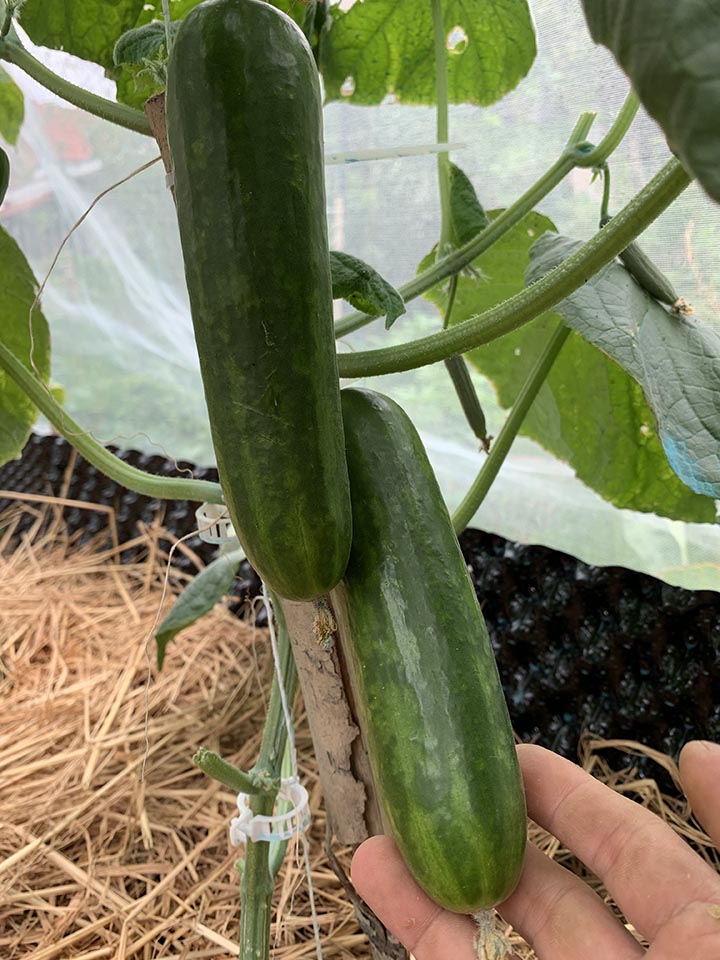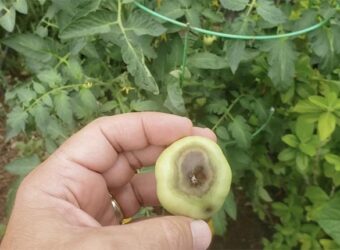Cucumbers are one of the most popular things to grow in the home garden. They are very good for you when harvested and stored properly.
Why Should We Harvest Cucumbers Properly?
Cucumbers are harvested when immature. It can be a bit tricky to determine when to harvest them. However, you need to learn for three reasons.
Taste Better
Mature cucumbers are large, with tough skin, fibrous flesh, and large seeds. They are not edible. If you try to eat a ripe cucumber, it will make you sick. Cucumbers harvested at the proper time, however, are crisp and delicious.


Get More Cucumbers
The longer a cucumber is on the vine, the greater the chance a pest will attack it, or it will get a disease, ruining it. Harvesting cucumbers from the vine every day or two makes sure you get the cucumber before something else does.
Better For The Plant
Producing a cucumber is exhausting for the plant. Letting a cucumber ripen on the vine takes a lot of food and water. When a few cucumbers ripen, the vine feels it has reproduced and will stop producing more cucumbers.
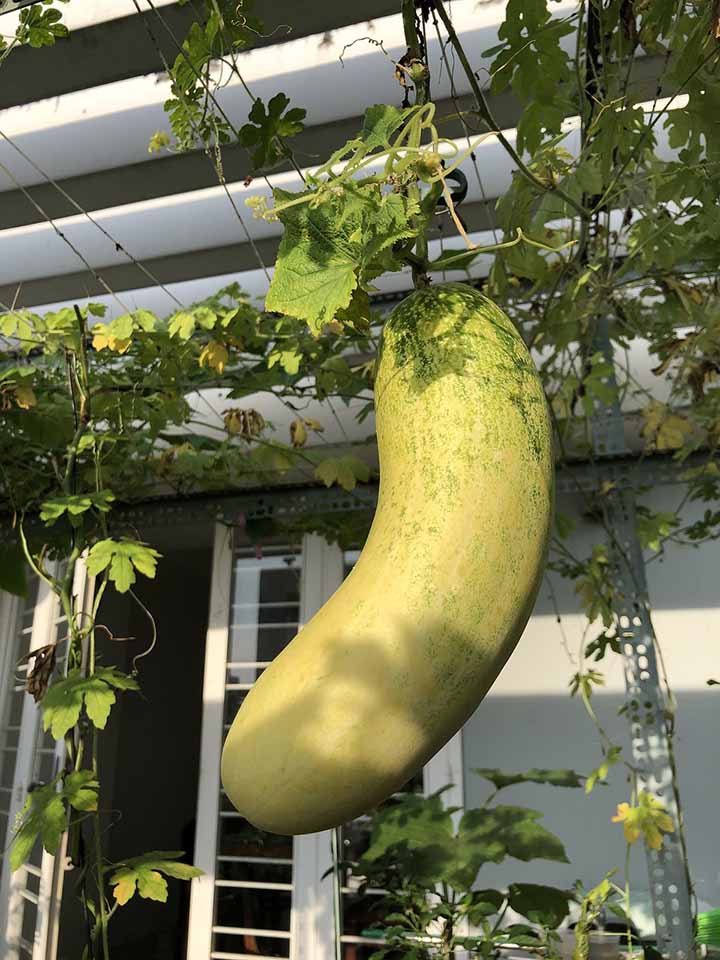
Harvesting the cucumbers when they reach eating size will lessen the load on the cucumber vine.
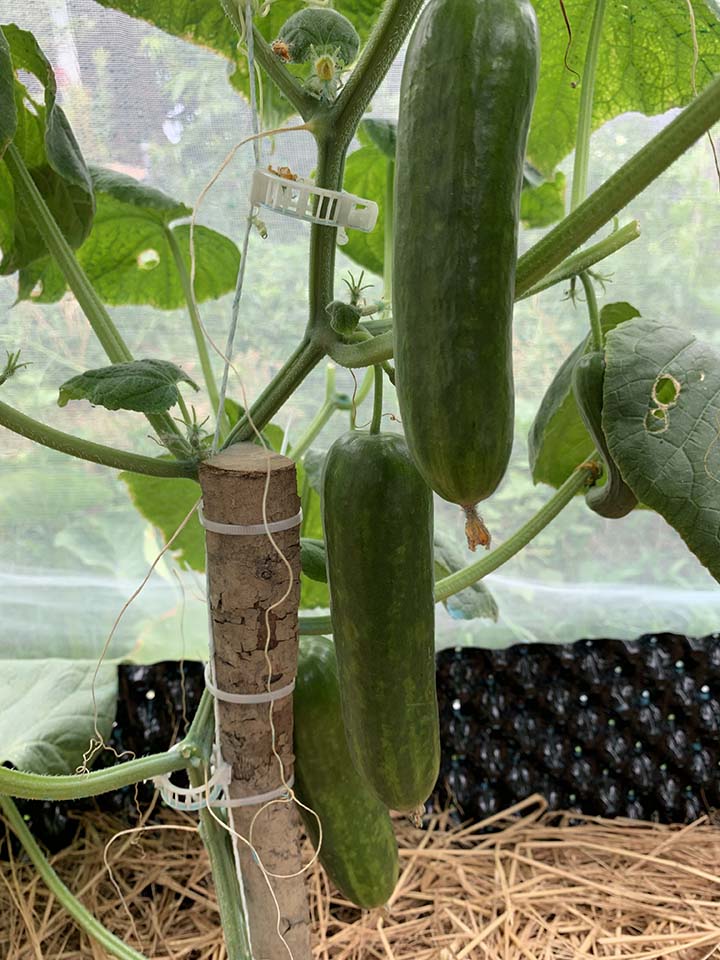
When all of the cucumbers are harvested at the appropriate time, the plant will also trigger the vine to keep producing more cucumbers.
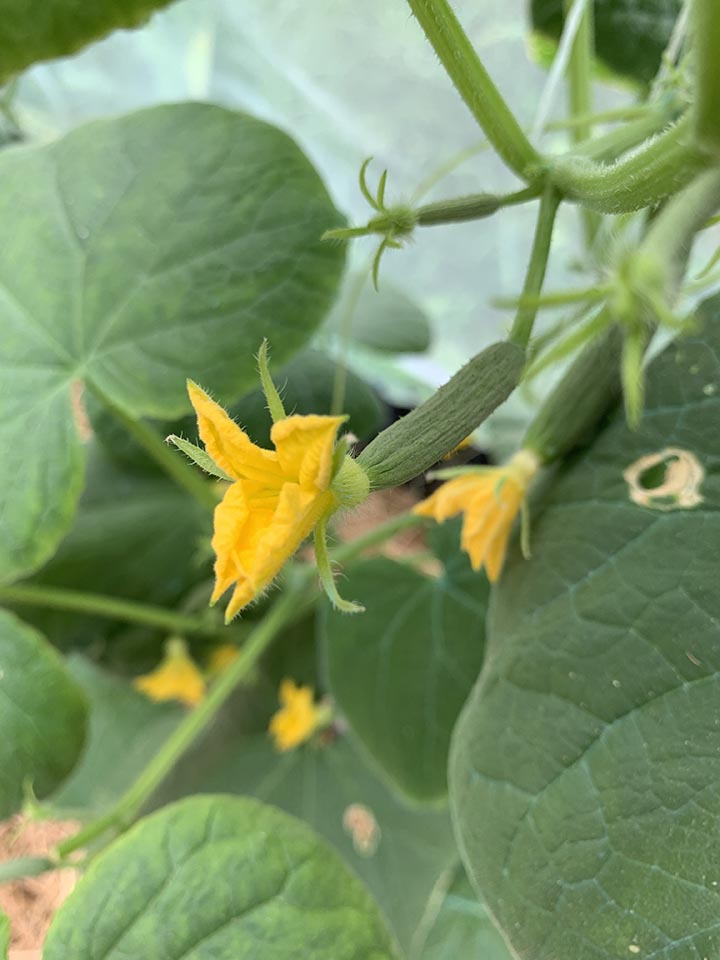
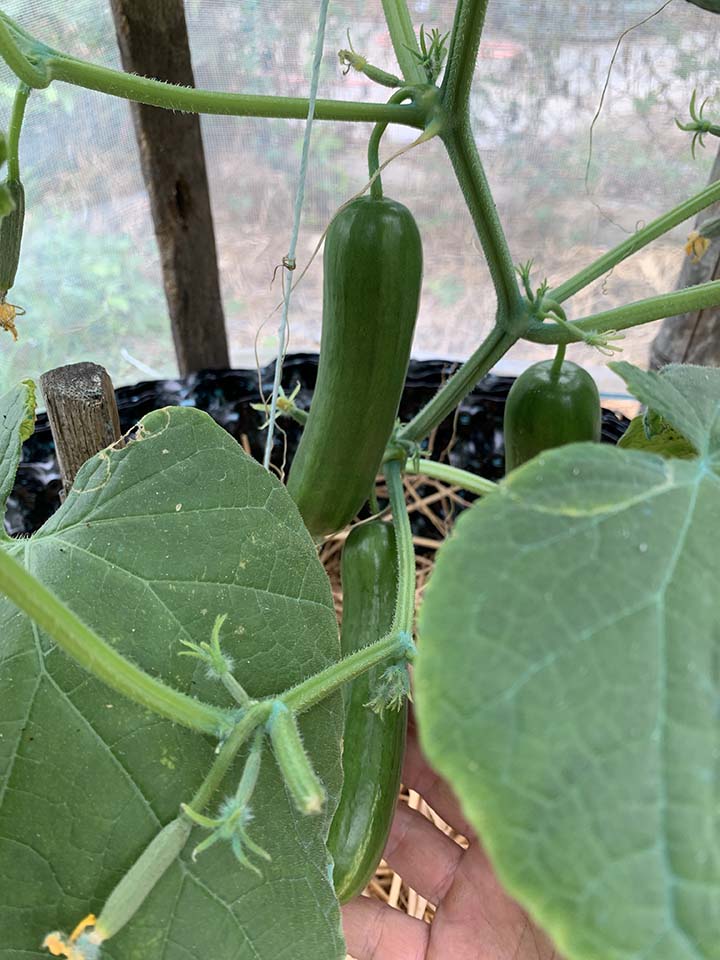
When Do I Harvest A Cucumber?
Since it is difficult to tell exactly when a cucumber is ready to eat, cucumbers are harvested based on size.
Pickling cucumbers are usually picked when they are three to four inches long. Slicing cucumbers are picked when they are six to twelve inches long, depending on the variety.
Lemon cucumbers and Armenian cucumbers are not actually cucumbers but squash. Armenian cucumbers are best harvested when they are twelve to fifteen inches long and about an inch in diameter. They have green, bumpy skin at that stage. Lemon cucumbers are best harvested when pale yellow and about three inches long. They are overripe when they get dark yellow.
Japanese cucumbers are a bit longer than Western cucumbers. They are best harvested when they are nine inches long. They are a solid dark green.
How Do I Harvest A Cucumber?
To harvest a cucumber, cut the vine ¼ inch above the vine.

Do not pull or twist the cucumber to remove it from the vine because that damages the vine and will reduce further harvests.
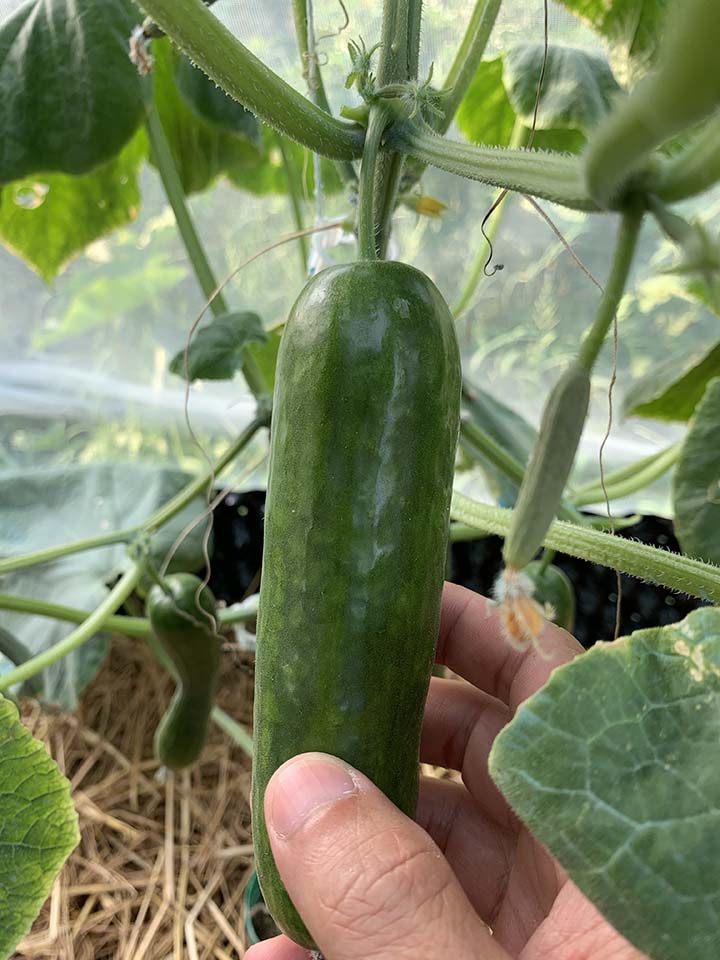
Best Time to Harvest Cucumbers
I pick cucumbers as early in the morning as I can for two reasons.
One, picking the fruit before it heats up for the day makes it last longer in the refrigerator.
Second, it is very hot where I live, and early morning is the safest time to be out in the garden. Waiting to pick the cucumbers when it is very hot risks heat-borne illness.
Can You Pick Cucumbers Too Early?
Cucumbers that are over ¾ inch can be picked. The very small ones are delicious as sweet pickles. However, most people let their cucumbers grow longer unless a freeze is forecast. In that case, pick all the cucumbers on the vine, as the vine won’t survive a freeze.
When Shouldn’t We Harvest Cucumbers?
You should always harvest cucumbers even if they have problems unless you have sprayed them with a pesticide. Pesticides tell you how long you must wait after using them to eat them.
For example, carbaryl, a common general pesticide, can be used up to a week before harvest for cucumbers. Don’t use a pesticide and harvest a cucumber you have treated until enough days have passed, or you may poison yourself.
Cucumbers that have developed diseases should be harvested and discarded. Leaving them on the cucumber vine will cause the vine to have fewer cucumbers. Similarly, cucumbers that have been partially eaten by pests should be harvested and discarded.
Some Common Types of Cucumbers And Their Harvest Times
Time to harvest is measured from transplant to harvest. If you are growing cucumbers from seed, add four to five weeks to the time to harvest.
| Type of Cucumber | Days from Transplant to Harvest | Notes |
| Slicing Cucumbers | 50-70 days | Smaller, bumpy, and thick skin, green when harvested |
| Straight Eight Cucumbers | 58 days | Harvest when eight inches long |
| Burpless Cucumbers | 55 days | Harvest when ten to twelve inches long |
| Spacemaster Cucumbers | 56 days | Harvest when 7 ½ to eight inches long |
| Diva Cucumbers | 58 days | Harvest when five to seven inches long |
| Marketmore Cucumbers | 63 days | Harvest when six to eight inches long |
| Pickling Cucumbers | 50-70 days | Smaller, bumpy and thick skin, green when harvested |
| Boston Pickling | 55 days | Smooth skin, usually used for big dill pickles, six to eight inches long |
| National Pickling | 55 days | Usually used for big dill pickles, six to eight inches long |
| Kirby Pickling | 53 days | Traditional bumpy pickle cucumber, harvest when three to four inches long |
| Lemon Cucumbers | 65 days | Harvest when three to four inches long and light yellow |
| Armenian Cucumbers | 70 days | Harvest when twelve inches long and light green |
| Japanese Cucumbers | 55 days | Harvest when nine inches and dark green |
Effective Ways to Extend Cucumber Season For A Better Harvest
The best way to extend the cucumber season is to start seeds indoors three to four weeks before the date when the temperature warms up enough to plant them. Alternatively, you can buy transplants to grow. Starting seeds in the ground delays the harvest by three to four weeks.
In the fall, covering the vines with frost cloth to protect them from frost will help them grow longer.
When it freezes, the vine will die. If you are growing your cucumbers in a pot, you can move them indoors before a freeze to extend the season.
How Do I Store Cucumbers After Harvest?
It is important to store cucumbers properly, or all your hard work raising them will be wasted.
Fresh Cucumbers
When cucumbers are harvested, they should be kept in a cool, humid area that is 55 F. Most people will not have such an area at home. Cucumbers can be kept in the refrigerator crisper drawer for about a week. Using them as soon as possible is best.
Freezing Cucumbers
Cucumbers do not freeze well, and this is not a recommended storage method.
Pickling Cucumbers
The traditional way to store cucumbers for a long time is by pickling them. You can pickle small slicing cucumbers, although they will not be as crisp as pickling cucumbers. If you want to pickle cucumbers, pick them at the same size for each batch of pickles you make. This allows all the pickles to cook and pickle the same. Uneven sizes can adversely affect the pickles.
Because pickles are acidic, you can use the water bath method to can them. Here are several recipes from Extension to use when canning cucumbers. Be sure and follow the recipes exactly. If you alter the proportions of vinegar, salt, and cucumbers, you risk getting food-borne illnesses from the finished pickles.
Dill Pickles
Dill pickles are easy to make and taste good. This recipe yields 7-9 pints.
- 8 lbs of 3- to 5-inch pickling cucumbers
- 2 gals water
- 1¼ cups canning or pickling salt
- 1½ quarts vinegar (5 percent)
- ¼ cup sugar
- 2 quarts water
- 2 tbsp whole mixed pickling spice
- about 3 tbsp whole mustard seed (2 tsp to 1 tsp per pint jar)
- about 14 heads of fresh dill (1½ heads per pint jar) or 4½ tbsp dill seed (1½ tsp per pint jar)
Wash your cucumbers and cut off the blossom end. Discard it but leave ¼ inch of stem on the cucumber. Dissolve ¾ cup salt in two gallons of water. Pour it over the cucumbers and let it stand for twelve hours. Drain the cucumbers. Mix vinegar, ½ cup salt, sugar, and two quarts of water. Tie the pickling spices in a clean white cloth and add them to the mixture. Heat the liquid to boiling. Put the cucumbers in the jars. Add one teaspoon of mustard seed and 1 ½ heads of fresh dill to each pint jar. Fill the jars with the boiling pickling solution, leaving ½ inch of headspace. Adjust the lids and process the pints for ten minutes if you live 0-1,000 feet above sea level, fifteen minutes if you live 1,001-6,000 feet above sea level, and twenty minutes if you live over 6,000 feet above sea level. Recipe from National Center For Home Food Preservation.
Sweet Pickles
Sweet pickles are also easy to make. You can cut the cucumbers into strips or slices for this recipe. Yields 7-9 pints.
- 8 lbs of 3- to 4-inch pickling cucumbers
- 1/3 cup canning or pickling salt
- 4-1/2 cups sugar
- 3-1/2 cups vinegar (5 percent)
- 2 tsp celery seed
- 1 tbsp whole allspice
- 2 tbsp mustard seed
Wash the cucumbers and cut the blossom end off of them. Discard the end but leave ¼ inch of stem attached. Cut the cucumbers. Place the cut cucumbers in a bowl with 1/3 cup of salt. Cover with two inches of crushed or cubed ice and refrigerate the cucumbers for 3-4 hours, adding more ice as needed. Drain the cucumbers. Combine the sugar, vinegar, celery seed, allspice, and mustard seed in a large pot. Heat to boiling. Put the cucumbers in the jars. Add the hot pickling syrup. Leave ½ inch headspace. Adjust the lids and process for ten minutes if you live 0-1,000 feet above sea level, fifteen minutes if you live 1,001-6,000 feet above sea level, and twenty minutes if you live over 6,000 feet above sea level. Recipe from National Center for Home Food Preservation.
Bread and Butter Pickles
Bread and butter pickles are sweet and usually sliced to use on hamburgers and other sandwiches. This recipe yields 8 pints.
- 6 lbs of 4- to 5-inch pickling cucumbers
- 8 cups thinly sliced onions (about 3 pounds)
- 1/2 cup canning or pickling salt
- 4 cups vinegar (5 percent)
- 4-1/2 cups sugar
- 2 tbsp mustard seed
- 1-1/2 tbsp celery seed
- 1 tbsp ground turmeric
Wash the cucumbers. Cut the blossom end off and discard. Cut each cucumber into 3/16-inch slices. Add the cucumbers and the onions together in a large bowl. Mix the salt in with the cucumbers and onions. Cover the vegetables with two inches of crushed or cubed ice. Place in the refrigerator for 3-4 hours, adding more ice as needed. Place the remaining ingredients in a large pot. Boil them for 30 minutes. Drain the cucumbers and onions and add them to the pot. Reheat the mixture to boiling slowly. Fill each jar with vegetables and the cooking syrup, leaving ½ inch headspace. Put the lids on and process for ten minutes if you live 0-1,000 feet above sea level, fifteen minutes if you live 1,001-6,000 feet above sea level, and twenty minutes if you live over 6,000 feet above sea level. Recipe from North Carolina State University Extension.
Fermented Pickles
Fermented pickles are ready in 3-4 weeks.
- Clean one-gallon container
- 4 lbs of 4-inch pickling cucumbers
- 2 tbsp dill seed or 4 to 5 heads fresh or dry dill weed
- 1/2 cup salt
- 1/4 cup vinegar (5 percent)
- 8 cups water
- One or more of the following ingredients: 2 cloves garlic (optional), 2 dried red peppers (optional), 2 tsp whole mixed pickling spices (optional)
Wash the cucumbers and cut the blossom end off. Place half the dill and spices on the bottom of the container. Fill the container with cucumbers and the rest of the dill and spices. Mix salt, vinegar, and water until the salt is dissolved. Add a suitable cover and weight to the container. Let sit in temperatures of 70-75 F for 3-4 weeks. Check regularly and skim off surface scum and mold. The cucumbers should be firm but flexible and have a sour taste when done. Store fermented cucumbers in the refrigerator for 4-6 months, or can them for longer storage. Recipe from North Carolina State Extension.
In conclusion, both pickling and slicing cucumbers are harvested when they are still immature. The seed packet or transplant label will tell you how long the cucumber should be when harvested. Cut the stem ¼ inch from the cucumber and store it in the refrigerator for about a week, or can it to store longer.
